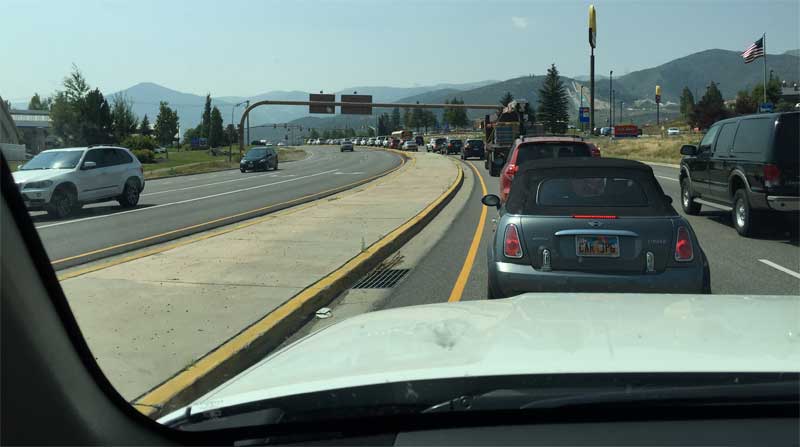How Many of Our “Traffic Problems” Are Really Design Issues?
Suppose you were Apple and had just released the newest iPhone. Let’s also suppose that the round button at the bottom worked about 99% of the time. You’d usually press it, and it would bring up Siri or the lock screen (as expected).
Yet, sometimes if you pressed it, it would do nothing at all. Or perhaps it would start blaring Taylor Swift (embarrassing if you’re 40 or 50 or 60 or maybe even 30). You’d want the button fixed, right? Of course. Is the whole phone completely worthless, and should Apple scrap the button concept and go back to the drawing board? No, of course not.
That’s somewhat how I feel about how we deal with traffic in the Park City area. 99% of the time it is fine. It’s that 1% of time, be it a huge snow, the arts festival, or a Friday night at 5PM in Kimball Junction that makes us take notice of traffic issues.
I was sitting in bumper-to-bumper traffic a couple of weeks ago, trying to make my way to Whole Foods, when I finally noticed the problem. The left turn lane at Ute boulevard isn’t long enough. That causes cars that want to turn left toward Smiths to sit in the middle of traffic and block the cars that want to go straight through. Meanwhile, drivers notice this and try to get in the right lane to get out of the mess. This causes even slower through traffic.This ultimately leads to traffic backing up onto the on-ramp and down to I-80.
What if the left turn lane was tripled in size? A lot of that issue would be solved.
Now, I’m not naive to think that all of our traffic issues can be solved by minor tweaks to the system, but I do believe it is the low hanging fruit of solutions.
It seems like we often try to wait on GRAND solutions to our issues. We try to build transportation centers. We create circulating buses around Kimball Junction. We try to create marketing campaigns to change people’s behavior to encourage them to ride buses. Perhaps the simplest solution is looking at the point problems and solving them.
To be fair, perhaps our city and county leaders have done that and are waiting on UDOT (who manages many of the trouble-spots) to fix them. That said, I truly do wonder how much better the average issue would be if we looked at the specific problems and addressed them.
If Park City took the $100,000 it spent on busing workers from Kearns to Main Street (where I think almost no one road this bus) last fall and invested it instead in having skiers park at Richardson Flats and bused them in, would it have prevented Carmageddon? If Summit County, instead of investing hundreds of thousands of dollars in a transit station in Kimball Junction, worked with UDOT to redesign how some roads work, would we be better off? Perhaps (the verdict is still out on the upcoming transit station).
I know that the perfect solution is always more complex than it seems. Yet, I wonder if there are a number of point solutions that would get us a long way toward making our citizen’s transportation experiences better.


Comments
2 Comments
Here is another simple change that would help at that same intersection. While traveling north in the far right lane on Hwy 224, why do you have to turn right onto Ute Blvd? Why not have the option of going straight through to the Chevron or I-80 east? This has been bothering me for years; thanks for suggesting simple, inexpensive changes that will make our lives easier.
Dysfunctional traffic design is exactly the issue and is worse than high volume at times. I made mention of the horrendous Pinebrook Boulevard/Kilby/Rasmussen underpass area as being one of the worst. Another is the 248 to Kearns entry way — the road was turned into a two lane road some time ago but the right lane coming off of I-80 dissappears then reappears as a turn lane into the hospital area. Given the traffic going into that area now, a complete lane would have been a much better design.
Leave a Comment